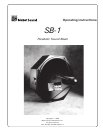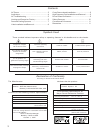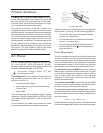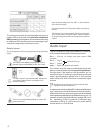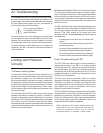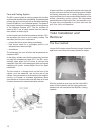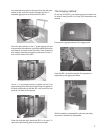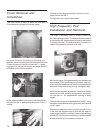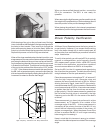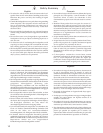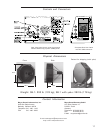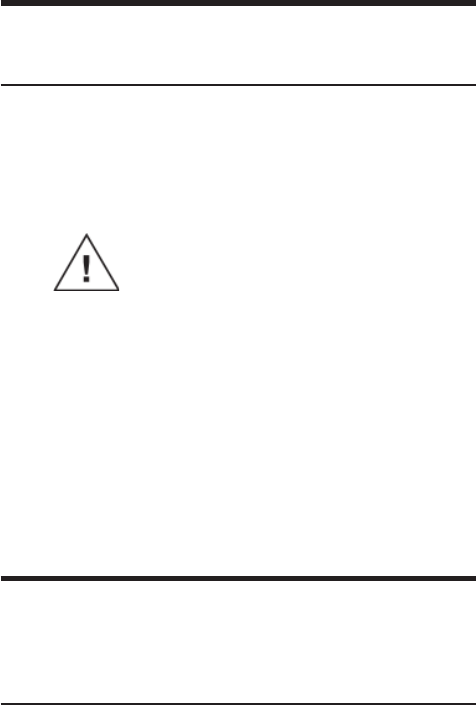
5
AC Troubleshooting
If the Active lamp does not light after connection to an AC
source for three seconds, the problem is probably in the
power supply. In the unlikely case that the circuit breakers
trip (the white center buttons pop out), the amplifier or
power supply may be malfunctioning.
Do not reset the breakers!
Contact Meyer Sound for
repair information.
If abnormal noise (hum, hiss, popping) is produced from
the loudspeaker, disconnect the audio source from the
speaker. If the noise stops, then the problem is not within
the loudspeaker; check your audio and AC power sources.
If problems persist, contact Meyer Sound. If repairs are
necessary, the SB-1’s modular components are easy to
remove and ship.
Limiting and Protection
Circuitry
TruPower Limiting System
Conventional limiters assume that the resistance of a
speaker remains constant and set the limiting threshold
by measuring voltage only. This method is inaccurate
because the speaker’s resistance changes in response to
the frequency content of the source material and thermal
variations in the speaker’s voice coil and magnet. Conven-
tional limiters begin limiting prematurely, which under-
utilizes system headroom and deprives the speaker of its
full dynamic range.
The TruPower Limiting (TPL) system accounts for varying
speaker impedance by measuring current, in addition to
voltage, to compute the power dissipation and voice coil
temperature. TPL allows the speaker to deliver its highest
SPL across its entire frequency range during limiting,
eliminates long-term power compression when operated at
high levels for extended periods, protects the drivers, and
extends component lifetime.
HI Limit and LO Limit LEDs on the user panel indicate
TPL activity for the high and low frequency drivers, respec-
tively. The limiters for each driver function independently
and do not affect the signal when the LEDs are inactive.
Limiting begins when the driver temperature exceeds the
maximum safe level and ceases when the temperature
returns to normal.
The SB-1 performs within its acoustical specifications and
operates at a normal temperature if the limit LEDs are on
for no longer than two seconds, and off for at least one
second. If the LEDs remain on for longer than three
seconds, the SB-1 is hard limiting with these negative
consequences:
• Increasing the input level will not increase the
volume.
• The system distorts due to clipping and nonlin-
ear driver operation.
• Unequal limiting between the low and high fre-
quency drivers alters the frequency response.
• Driver and amplifier components are subjected
to maximum heat, which shortens their life- span.
Driver Troubleshooting with TPL
The TPL LEDs can indicate serious driver problems, if
interpreted correctly. If one SB-1 in a system exhibits
substantially more TPL activity than others receiving the
same audio signal, then the driver corresponding to the
excessively active LED may have a short circuit. This is a
potentially dangerous condition for the electronics; shut
the SB-1 down immediately.
The TPL circuit does not activate if there is no power
dissipation in the driver, regardless of the input signal level.
Therefore, if all SB-1s in a system receiving the same
audio signal exhibit TPL activity except one, then that unit
may have an open voice coil; disconnect it and contact
Meyer Sound for repair information.
The TPL LEDS can indicate an imbalance in a configuration
of speakers by functioning like a spectrum analyzer. If the
speakers in a subwoofer, mid-bass, or mid-hi subsystem
begin to limit before reaching the required operating level
for the entire system, then that subsystem needs to be
supplemented with additional speakers.
NOTE: Although the TPL limiters exhibit smooth sonic
characteristics, we do not recommend using them for
intentional compression effects. Use an outboard
compressor/limiter to compress a mixed signal.



